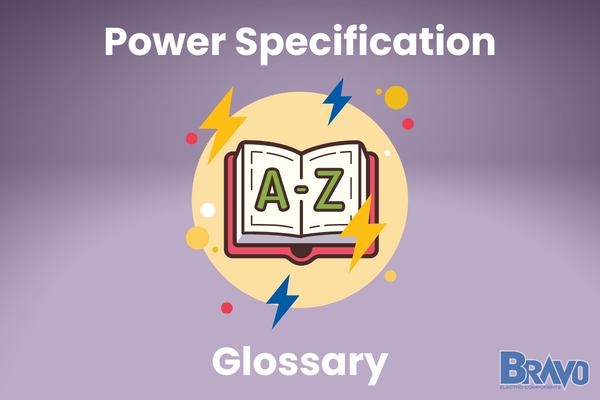
Power supplies, also known as power converters, are a critical component of the modern world. They provide the precise voltage levels and current needed for electronic components to work correctly. As such, it is important that engineers and technicians have a clear understanding of power supply specifications and how they affect their products.
In this blog post, we will provide an overview of AC DC power supply specifications so you can ensure your product uses the right type of power supply for the job.
A Comprehensive List of AC DC Power Supply Specifications
When evaluating a power supply, there are several key specifications to consider. Here is a list of the most important ones, along with an explanation of each:
Type
When selecting an AC DC power supply, one of the most important factors to consider is the type of unit you will need. The two main categories are linear and switching power supplies.
Linear power supplies have a single output voltage and provide a constant current or voltage while switching power supplies use high-frequency oscillation to provide multiple voltage levels and higher power supply efficiency.
Voltage
Voltage is measured in volts (V) and it relates to the amount of electrical pressure being used to create an electrical current.
When selecting your AC DC power supply, make sure that it can output voltages that meet both your minimum and maximum needs; otherwise, it could cause damage to connected components.
Current Rating
Current rating measures the maximum amount of electric current that can be safely supplied by a particular model of AC/DC power supply.
This value should take into consideration the total load requirements of any device you plan on connecting to it, as drawing more current than the rating allows could result in failure or even fire hazards.
Frequency
Frequency describes how many times per second an alternating current changes direction and is usually expressed in Hertz (Hz).
AC/DC power supplies must be capable of accommodating different frequencies within their given range in order for them to function properly with varying loads from different electronic devices.
Output Capacity
The output capacity indicates how many watts a given model can deliver at once without overheating or becoming damaged.
Generally speaking, outputs up to 300 Watts are considered low-power models; anything above this is considered mid-level or high-power designs depending on warranty specifications offered by its manufacturer.
Output Voltage at 11/120 and 200/240
Most residential AC/DC power supplies are designed for use with either 120 or 240 Volts circuits; they generally list their expected output values anywhere from 11 to 120 VAC or 200 to 240 VAC respectively.
High-voltage power supplies, on the other hand, can be designed to operate with higher input and output voltage levels. Matching this requirement with the actual power supply voltage range provided by your chosen model is critical for ensuring reliable performance and avoiding potential damage due to surges or sags during operation.
Efficiency
Efficiency measures how much energy is actually converted into useful output versus what is lost as heat during operation. A higher efficiency rating means more economical long-term costs, as it reduces the amount of electricity that is wasted.
Therefore, when making a purchase decision for any product, make sure to check its manufacturer's rated efficiency to ensure you’re getting the most bang for your buck.
Class 2 vs Class II Power Supply
Class 2 and Class II are terms used to describe multiple levels of low voltage direct (LVD) current power supplies determined by UL certifications and standards developed jointly by Underwriters Laboratories (UL), European Commission (EC), International Electrotechnical Commission (IEC), and Canadian Standards Association (CSA).
Generally speaking, class II uses double insulation protection versus single insulation protection found in class I setups; meaning that it provides extra safety against electric shock due to currents leaking from faults occurring within these systems via extra layers of barriers around live parts or equipment such as wires, connectors, etc.
ITHD
Inrush transient thermal dissipation (ITHD) measures how quickly a given model can dissipate heat generated by quick bursts of electricity when it first turns on—a key safety feature for any electronic device using direct current input such as computers and gaming consoles.
Products with low ITHD ratings tend to last longer since they cool down faster after heavy periods of usage without having too much strain put onto them from prolonged exposure to excessively high temperatures.
Power Supply Sizing
To guarantee that a power supply can manage the demand, it must be precisely proportioned and furnish sufficient voltage and current levels. This involves an analysis of both the mechanical and electrical size requirements of a project.
The right size power supply has enough watts to meet your energy demands without exceeding its maximum safe operating temperature. Look out for the wattage rating on a power supply before purchase to ensure it is large enough for your project.
Fan Specs (Size, Noise, Type)
fan size, noise, and type are all important factors to consider when selecting a power supply. The fan size determines the amount of air the fan can move, which impacts how much cooling the power supply can provide. The noise level of the fan is important if you want a quiet system, as some fans can be loud. The fan type (sleeve, ball-bearing, etc.) can also affect the noise level and reliability of the fan. These are all things to take into account when shopping for a power supply.
Form Factor
The form factor of a power supply determines whether it will fit in your unique case - which is obviously important when building or replacing a PSU! Common form factors include ATX, SFX, and TFX. Make sure to check your case specifications to ensure that the power supply you are considering is compatible. You can read our article - what power supply do I need? - for more information.
PFC (Power Factor Correction)
PFC is a feature that improves the efficiency of a power supply by reducing the amount of reactive power drawn from the wall outlet. Power supplies with PFC are more energy-efficient and can save you money on your electricity bill.
There are two types of PFC - passive and active. Active PFC is more effective than passive PFC, so if you’re focused on energy savings, heat reduction, and longevity, you’ll want to stick with that specification.
MTBF (Mean Time Between Failures)
MTBF is a measure of the expected reliability of a power supply. It is the amount of time a power supply can operate before it is likely to fail. When comparing power supplies, it's important to consider their MTBF ratings - because a higher MTBF means that the power supply is expected to last longer.
Other Certifications
There are several third-party organizations that certify power supplies for efficiency, noise, and other performance factors. These certifications include 80 PLUS, Cybenetics, and others. A power supply with these certifications has been tested and meets certain standards, so it can give you peace of mind that the power supply will perform as expected.
How Do You Read a Power Supply Specs?
Now that you know what to look for in an AC DC power supply, it’s time to learn how to read the specs. Power supply ratings are typically printed on the label of the unit and may include only a few vital pieces of information or an extensive list depending on its design. You can find these directly on the product page of any power supply sold at Bravo Electro.
The most important specs to pay attention to include input voltage, output voltage, efficiency, class type, ITHD rating, and wattage or current capacity. All of these characteristics must be accurately assessed against your project’s requirements to ensure that a particular model is the most suitable choice for you. Here are some purchasing tips when shopping for power supplies:
- Is the power supply UL certified? UL listed vs UL recognized power supplies refers to whether they meet the safety criteria created by Underwriters Laboratories (UL). UL certification is a requirement for all products sold in the United States and Canada, so make sure to look out for this during purchase.
- What type of protection does it have against overloads, short circuits, and overheating? This feature is important if you want your device to be safe and reliable.
- Check out the power factor rating to ensure that it is as close to 1 as possible because this will result in more efficient energy utilization.
- If your project requires tighter voltage tolerances, look for a model with low ripple noise specifications (typically measured in mV).
Got Specific Questions About Power Supply Specifications?
Maybe you want to know what a modular power supply is, who makes the best power supplies, or which bad power supply symptoms you should keep an eye out for. Whatever your questions, our team at Bravo Electro is here to help.
And when it comes to selling top-of-the-line power supplies, we have you covered. We have a wide range of top-quality supplies, including enclosed power supply, open frame power supply, DIN rail power supply, and even LED driver power supply.
Our customer service is unmatched. So feel free to reach out with any questions or concerns you may have!
Final Thoughts on AC DC Power Supply Specifications
Understanding the basics of AC DC power supply specifications is essential for any project requiring an external power source. The specs should be analyzed against your energy demands to ensure that you get a product that will meet your needs in the safest and most efficient way possible.
At Bravo Electro, we have exactly what you need for all sorts of projects and customer support to back it up. We have 12v power supplies, 24v power supply, and even 48v power supply ready to be shipped out. You can learn more about the basics of power supply in our blog as well - where we cover topics such as what’s the difference between AC and DC power or is household electricity AC or DC? Visit us online today and let us help you find the best power supply for your specific needs









